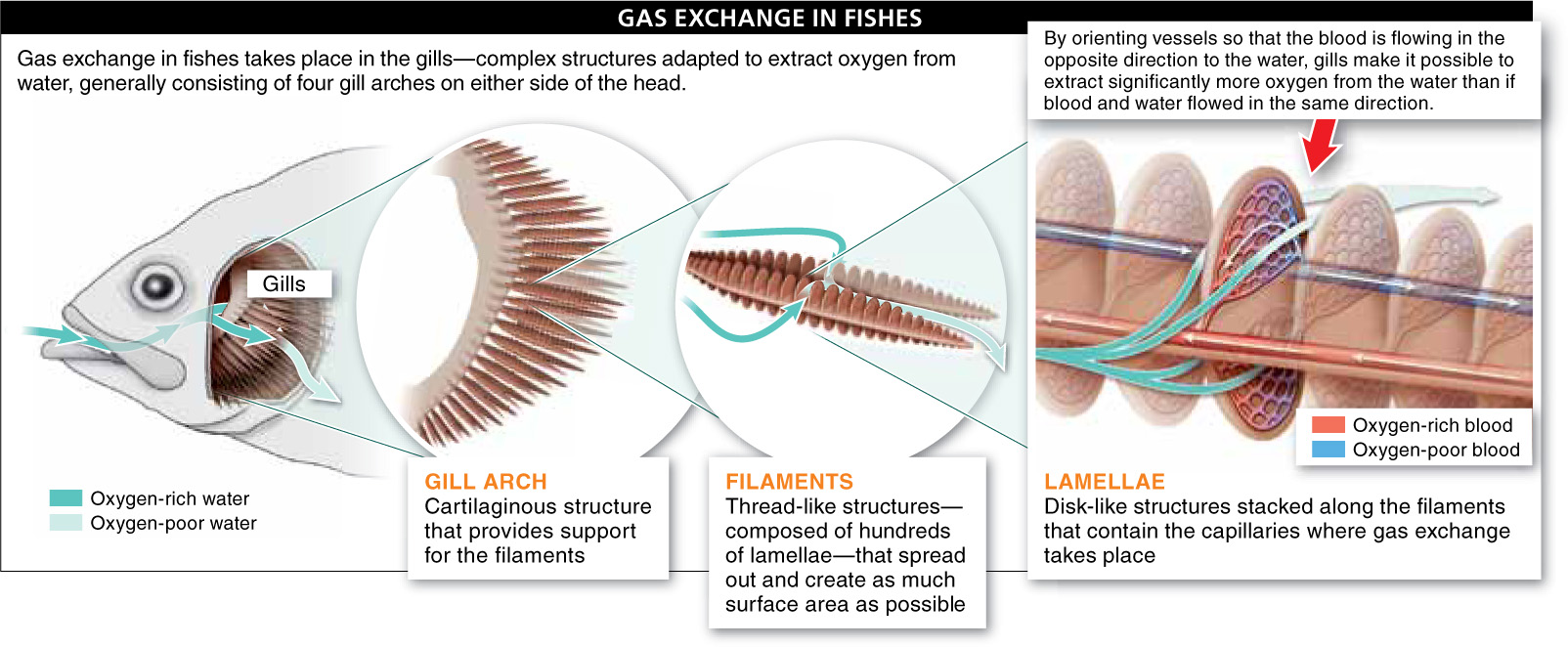21.14: Gas exchange takes place in the gills of aquatic vertebrates.
Respiration in a fish begins with a gulp. The fish opens its mouth and sucks in a mouthful of water. It then closes its mouth, opens small holes on either side of its head, and releases, or “exhales,” the water. Unlike the air that humans and other mammals breathe in and out, water follows a one-
Gas exchange takes place as the water passes through the gills, complex structures adapted to extract as much O2 as possible from water (FIGURE 21-32). This extraction is a difficult task, because water has only 5% of the oxygen concentration found in air. The gills generally consist of four bony or cartilaginous gill arches on either side of the head. Similar in appearance to the teeth of a comb, these arches support the gill. Long filaments of tissue extend like an accordion from each gill arch, spreading out and creating as much surface area as possible. The filaments are stacks of hundreds of disk-

Blood circulation in gills is set up in a simple pattern that is highly efficient at extracting oxygen from the water. In each filament, the blood vessels are arranged so that the blood is moving in the opposite direction from the water flowing past the gills. Called a “countercurrent exchange system,” this layout is much more efficient than if the blood flowed in the same direction as the water. If the blood and water flowed in the same direction, the gills would extract a maximum of about 50% of the oxygen in the water; with the countercurrent system, the gills extract as much as 85% of the oxygen in the water.
Fishes are not the only aquatic animals with gills. Many other groups of vertebrates and invertebrates have gills, including mollusks, such as clams, and arthropods, such as lobsters. Gills range from simple to complex, and there is a great deal of variation in the associated structures. Most sharks, for example, move water past their gills, not by gulping in water as do most fishes, but just by swimming forward all the time. If the shark stops moving forward, the oxygen in the water surrounding its gills is quickly depleted and the shark will suffocate. Consequently, most sharks spend their whole lives moving forward.
858
“Relationships are like sharks; they have to keep moving or they die.”
— WOODY ALLEN, Annie Hall
TAKE-HOME MESSAGE 21.14
In aquatic vertebrates, respiration begins when an organism opens its mouth, takes in water, and moves the water out through its gills. Gas exchange takes place in the gills, which extract as much as 85% of the oxygen from the water.
Why is a countercurrent exchange system a much more efficient method of gas exchange for aquatic vertebrates than if blood flowed in the same direction as water?